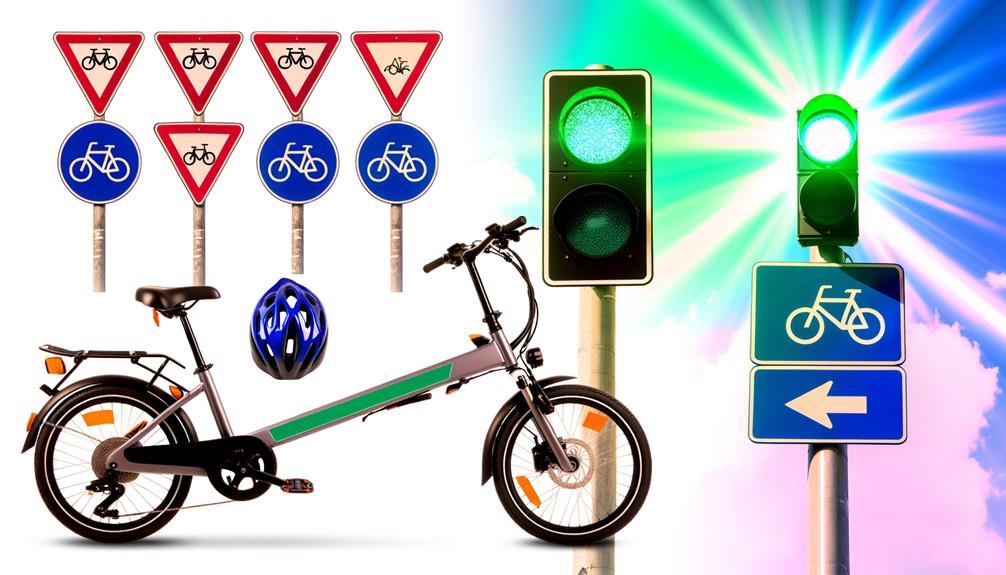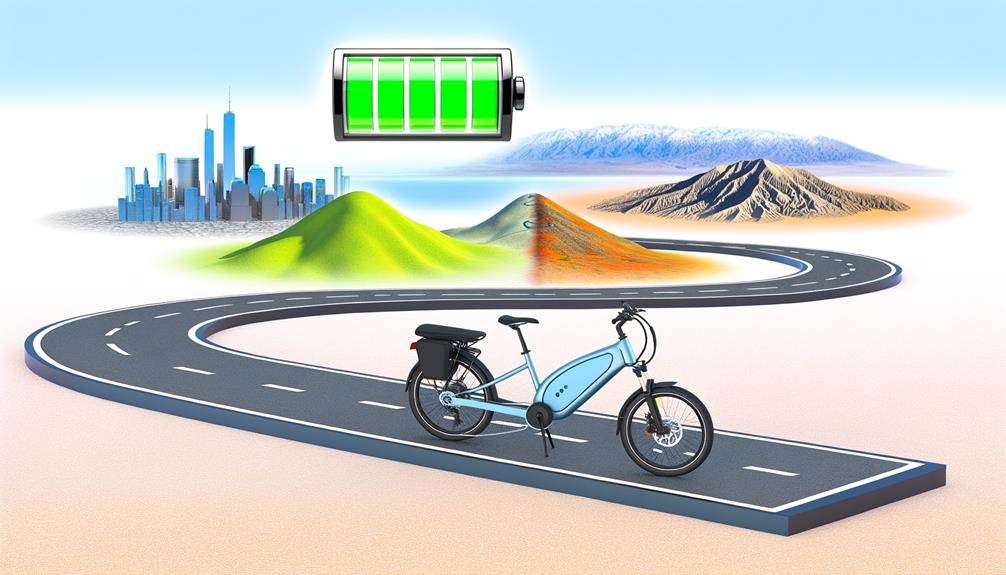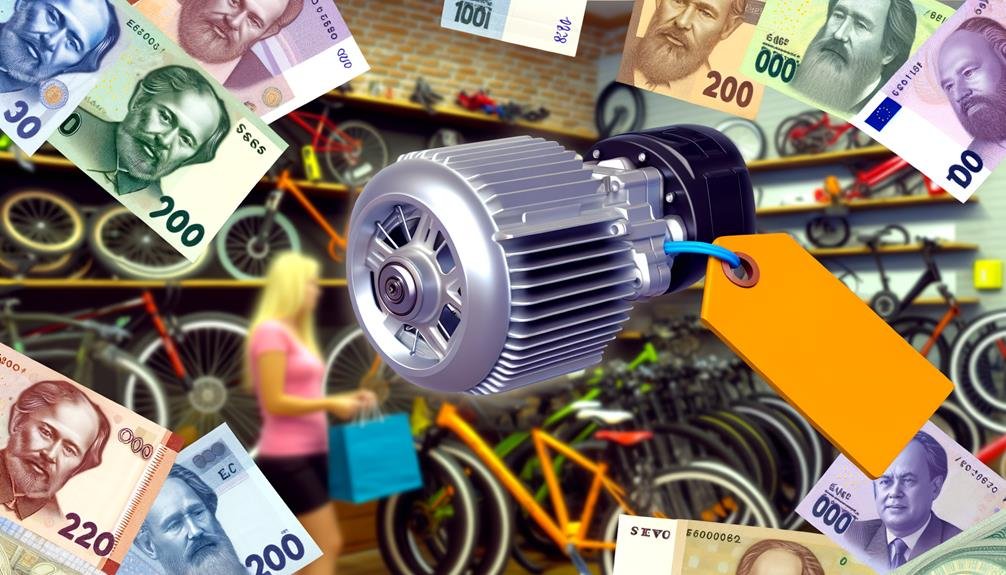Charles Miller is a veteran bike enthusiast with over 12 years of experience dealing with bikes as a mechanic. Despite immense love and expertise for...
We all want to get places quickly, efficiently, and most importantly, safely. Electric bikes, or e-bikes, are becoming a popular mode of transportation because of their speed and environmental friendliness.
But how safe are they? We're all aware of the general dangers that come with cycling, but e-bikes introduce a few new factors into the equation. We'll explore these factors, the risks they might pose, and how to ensure you're as safe as possible when you're out and about on your e-bike.
But for now, let's just say that the answer might surprise you.
Key Takeaways
- Electric bikes have several safety features, including anti-lock braking systems, built-in lights, and speed limiters, which contribute to safer riding.
- Compared to traditional bikes, electric bikes are faster and heavier, but they also have potential safety considerations such as product defects and higher speeds.
- Studies show that e-bike riders have a higher risk of internal injuries compared to traditional bike riders, likely due to the speed and power of e-bikes.
- To mitigate the risks of e-bike accidents, wearing protective gear, regular maintenance, riding defensively, and adhering to state laws and regulations are crucial.
Understanding Electric Bike Safety Features
When considering the realm of electric bikes, it's crucial to delve into their various safety features, such as anti-lock braking systems (ABS), built-in lights and reflectors, electronic stability control (ESC), speed limiters, and advanced battery management systems. These features significantly enhance the safety of electric bikes, answering the question: How safe is an electric bike?
We'll begin by understanding electric bike safety features, starting with ABS. This technology improves braking control, preventing skidding and enhancing stability.
Built-in lights and reflectors, meanwhile, offer better visibility during low-light conditions, making the rider more noticeable to other road users.
Additionally, some electric bikes incorporate ESC. This feature helps maintain stability, preventing unexpected skidding and falls, especially on slippery surfaces.
We also need to appreciate the importance of speed limiters. These ensure that the bike doesn't exceed legal speed restrictions, contributing to safer, controlled riding.
Comparing E-Bikes and Traditional Bikes
Having explored the safety features of electric bikes, it's now essential to compare these e-bikes with their traditional counterparts to fully grasp their safety implications. One might wonder if e-bikes are safer than regular bikes, and that's a valid question.
E-bikes, with their motor assistance, take some strain off the rider, unlike traditional bikes that rely purely on pedal power. However, the additional weight and speed of e-bikes introduce unique safety factors.
Here's a comparative table to illustrate:
| Factors | E-Bikes | Traditional Bikes |
|---|---|---|
| Power Source | Electric Motor | Pedal Power |
| Speed & Weight | Faster & Heavier | Slower, Lighter |
| Safety Considerations | Potential for Defects, Higher Speeds | Lower Speed, Less Impact |
| Environmentally Friendly | Yes | Yes |
| Safety Regulations | Specific to E-Bikes | General Cycling Rules |
While both types of bikes offer an environmentally friendly mode of transportation, it's important to consider their unique safety considerations. For example, the risks associated with product defects in e-bikes pose an additional layer of safety concern.
In essence, while e-bikes may offer an easier ride, they also come with their own set of safety implications that riders should be aware of.
Injury Risks With Electric Bikes

While e-bikes offer convenience and speed, they also pose a higher risk of severe injuries, particularly internal ones, compared to traditional bikes. Riding an e-bike comes with its own set of unique injury risks with electric bikes being three times more likely to be involved in accidents with pedestrians.
Here are some important factors to consider:
- Increased risk of internal injuries
- Studies indicate that e-bike riders have a 17% risk of internal injury post-accidents, a percentage significantly higher than for pedal-bike riders.
- The speed and power of e-bikes can lead to more severe crashes, causing these serious internal injuries.
- Defective e-bikes and their risks
- Defective e-bikes can lead to catastrophic accidents.
- It's crucial to always check for defects before each ride and contact the manufacturer for replacements if needed.
We need to be aware and prepared for these injury risks when riding an e-bike. Safety should always be our top priority. Regular inspections and adherence to local traffic laws can go a long way in mitigating these risks.
Mitigating Risks of E-Bike Accidents
In light of these potential risks associated with e-bikes, it's crucial we explore various strategies to mitigate accidents and ensure a safer ride.
Firstly, the importance of protective gear can't be overstated. Helmets, in particular, are essential and, coupled with adherence to traffic laws, can significantly reduce the risk of injuries.
Regular maintenance of electric bikes is another key factor in mitigating risks of e-bike accidents. Checking brakes, chains, and other components regularly helps ensure the safe operation of these vehicles, enhancing rider safety.
We must also consider the weight and speed of e-bikes. Riding defensively, with a keen awareness of our surroundings, can help us navigate potential hazards and minimize the risk of accidents.
Moreover, abiding by state laws and regulations governing e-bike usage isn't just about compliance, but also about safety. This adherence ensures we meet safety standards, further minimizing potential risks.
Lastly, staying informed about safety guidelines, recalls, and other safety-related information is essential. Knowledge is power, and in this context, it's a powerful tool for mitigating risks associated with e-bike accidents.
Road Rules for Electric Bikes

Navigating the roads on an electric bike involves adhering to the same traffic rules as car drivers, a stipulation that serves to maintain order and safety. Being part of the traffic flow, we must understand and respect the road rules for electric bikes.
Let's delve into the specifics:
- Just like car drivers, we must travel in the same direction as traffic and come to a complete stop at stop signs.
- It's critical to note that riding on the sidewalk is prohibited. Not only is it illegal, but it can also lead to accidents with pedestrians.
- We can't underscore enough the importance of wearing appropriate safety equipment. Head protection, like a helmet, is non-negotiable.
Beyond these basic 12 road rules for electric bikes, we must also remember to be cognizant of other road users. As e-bike riders, part of our responsibility is to contribute to a safer road environment. This includes signaling our intentions and being vigilant at all times.
Frequently Asked Questions
What Are the Risks of Electric Bikes?
We're aware electric bikes pose risks, especially with speed control and the necessity for helmets. They're heavier and faster, requiring extra caution. Defects can lead to accidents, so regular checks are crucial for safety.
What Are the Drawbacks of Electric Bikes?
We've noticed electric bikes have certain drawbacks. The battery lifespan isn't always reliable, and there are potential charging hazards. It's crucial to stay informed and take precautions when using these innovative transportation tools.
Are Ebike Fires Common?
We're often asked, "Are ebike fires common?" While they can occur, it's not a widespread issue. Following fire prevention measures and proper ebike battery maintenance significantly reduces the risk. We're all in this together.
What Should You Not Do on a Electric Bike?
We've got to remember, on an e-bike, don't bypass speed controls, they're there for our safety. Battery maintenance is also vital to avoid overcharging risks. Let's cherish our rides and stay safe together.
Conclusion
In conclusion, we believe electric bikes can be brilliantly beneficial but require responsible riding. By respecting road rules, recognizing risks, and regularly maintaining your machine, e-bikes can be a superbly safe selection.
However, don't dismiss diligence. Always adhere to safety standards and stay sharp on your surroundings. With wisdom in wheeling, e-bikes aren't just environmentally efficient, they're entirely enjoyable and extraordinarily expedient too.

Charles Miller is a veteran bike enthusiast with over 12 years of experience dealing with bikes as a mechanic. Despite immense love and expertise for his Tacoma, he rides his Trek Ebike more. Anytime you meet him, you’ll either hear him talking about Bikes, or writing about all things bikes and cars on this blog.
More Posts


